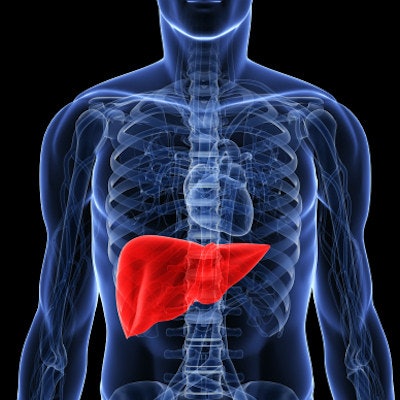
MRI and ultrasound elastography with an acoustic radiation force impulse (ARFI) technique are the most effective modalities for identifying liver nodules in patients who undergo a cardiac procedure that can lead to liver damage, according to a study published online September 24 in the American Journal of Roentgenology.
The Fontan procedure is used in pediatric patients with congenital heart disease that is characterized by a single functional ventricle, wrote a research team led by Dr. Natally Horvat of the Hospital das Clínicas da Faculdade de Medicina da Universidade de São Paulo in Brazil. Adults who had this procedure as children are vulnerable to liver damage later in life -- including liver fibrosis, cirrhosis, and nodules -- and clinicians don't agree on how to assess their liver health.
"Currently, there is no consensus in the literature regarding liver evaluation in patients after the Fontan procedure, particularly on the screening of hepatic nodule ... and which is the best imaging modality indicated for it," the team wrote. "The American Heart Association and the Canadian Cardiovascular Society consensus statements discuss each imaging modality ... but the final recommendation is serial evaluation of liver function without a specific recommendation regarding imaging examinations."
Horvat's group evaluated the performance of ultrasound, CT, MRI, and ARFI elastography in 49 patients who had the Fontan procedure as children and who underwent clinical evaluation for liver disorders between August 2014 and June 2016; of these 49 patients, 95.9% had no symptoms. Mean patient age was 26, and mean age at time of Fontan procedure was 11.
The researchers found that MRI was the most effective imaging modality for identifying liver nodules in this population.
| Detection of hepatic nodules after Fontan procedure by modality | |||
| US | CT | MRI | |
| Hepatic nodules detected | 6.1% | 31.8% | 39.6% |
The team also found that liver stiffness values on ARFI elastography were higher in patients with hepatic nodules -- and a significant predictor of them, with a sensitivity of 78.9% and a specificity of 67.9%. The researchers conjectured that higher values of liver stiffness suggest a "worse hepatic environment by both congestion and fibrosis, which are known risk factors for hepatic nodules."
In any case, the study does suggest a protocol that could be used to assess liver health in patients who underwent the Fontan procedure.
"In our study, more than one-third of patients had hepatic nodules at CT or MRI, but ultrasound did not detect most hepatic nodules," the group concluded. "Liver stiffness at ARFI elastography was significantly higher in patients with hepatic nodules, and it may help in guiding which patients should be further imaged."




















